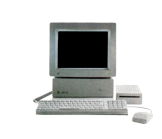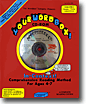YourWordBox!
Your Rating: Not Yet Rated
Average Rating: Not Yet Rated
RAM Requirement: 1.5 meg RAM
Other Requirements: Apple CD SC, SCSI, CFFA (any version), MicroDrive, Focus
Control: Mouse & Keyboard
Release Status: Abandonware
Year: 1990
For Ages: 4 - 7
Publisher: The WordBox!
Developers: Terry & Dr Dorothy Loar
System 6 Compatible: Yes
Hard Drive Installable: No
 Download 2image Archive (60844k)
Download 2image Archive (60844k)
 Download the manual in PDF format (24014k)
Download the manual in PDF format (24014k)
All ebay results related to this archive:
No Results for 'YourWordBox!' for the Apple IIGS available on Ebay
Current Apple IIGS related Auctions Listed By Time Left:
Vintage Software Apple II IIe IIc IIgs RUSSIA The Great War in the East
LEGO TC Logo - Super Rare DACTA - APPLE IIe & IIgs - Interface Card & Cable 9767
Apple ADB Touchpad Mouse Mice Replacement for G5431 m1042 M2706 A9M0331 IIGS IIe
Phonics Prime Time 1.0 by MECC for Apple II+, Apple IIe, Apple IIc, Apple IIGS
Sound Tracks 1.0 by MECC for Apple II+, Apple IIe, Apple IIc, Apple IIGS
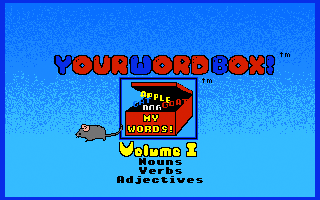
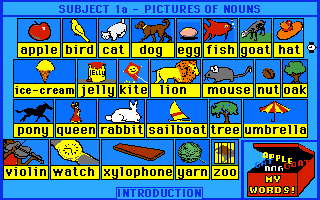
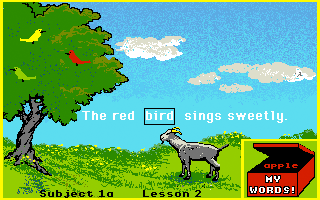
A rare IIGS specific CD-ROM title. It was announced in InCider Dec 1990 in 'What's New', but the program seemed lost...until now.
This archive includes the 4 different CD-ROM partitions that can setup with SCSI hard drives, CFFA 1 and 2, MicroDrive cards and Focus cards (or any hard drive really, but you'll need to configure its partitions exactly to match the partitions as they came on the CD-ROM). An easier way to set them up would be simply to use the CFFA3000 to mount all four CD-ROM partitions into the smartport. It's also easy to use under emulation — using Sweet 16, simply mount all four partitions and run from the Finder. It should be just as easy under KEGS (and its variants GSPort and ActiveGS). This archive now also includes cue/bin files so you can burn to an actual CD-R and run the program from a IIGS equipped with a SCSI card and CD-ROM drive.
Whatever method you use to get the program running, you will NEED to also mount the included 800k Kids' Disk image, which is used to save progress for students. A 3.5" disk image was also provided as a boot disk (which would allow for the potential for the executable file to be updated, which of course couldn't be done to write protected CD-ROM disk, but I've found in my testing (with only Sweet 16) that the boot disks comes up with an error, whereas simply double clicking the application on the first CD-ROM partition from System 6.0.1 seems to run better. For absolutely best experience, use an install of System 6.0.1 with minimal system extensions.
Have a play for yourself. This could have been the future for the IIGS in the 1990s, had Apple not pulled the plug on the Apple II line in favour of the Macintosh.
